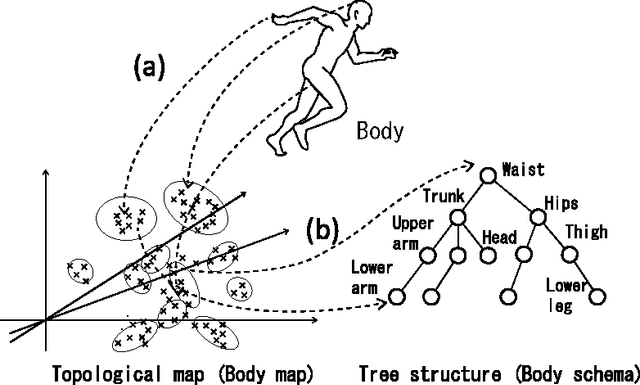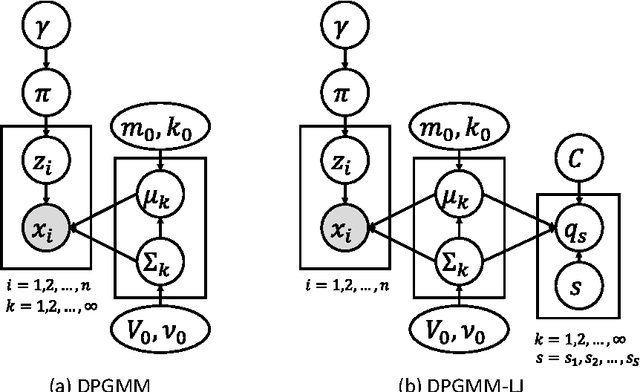Bayesian Body Schema Estimation using Tactile Information obtained through Coordinated Random Movements
Paper and Code
Dec 01, 2016



This paper describes a computational model, called the Dirichlet process Gaussian mixture model with latent joints (DPGMM-LJ), that can find latent tree structure embedded in data distribution in an unsupervised manner. By combining DPGMM-LJ and a pre-existing body map formation method, we propose a method that enables an agent having multi-link body structure to discover its kinematic structure, i.e., body schema, from tactile information alone. The DPGMM-LJ is a probabilistic model based on Bayesian nonparametrics and an extension of Dirichlet process Gaussian mixture model (DPGMM). In a simulation experiment, we used a simple fetus model that had five body parts and performed structured random movements in a womb-like environment. It was shown that the method could estimate the number of body parts and kinematic structures without any pre-existing knowledge in many cases. Another experiment showed that the degree of motor coordination in random movements affects the result of body schema formation strongly. It is confirmed that the accuracy rate for body schema estimation had the highest value 84.6% when the ratio of motor coordination was 0.9 in our setting. These results suggest that kinematic structure can be estimated from tactile information obtained by a fetus moving randomly in a womb without any visual information even though its accuracy was not so high. They also suggest that a certain degree of motor coordination in random movements and the sufficient dimension of state space that represents the body map are important to estimate body schema correctly.
 Add to Chrome
Add to Chrome Add to Firefox
Add to Firefox Add to Edge
Add to Edge